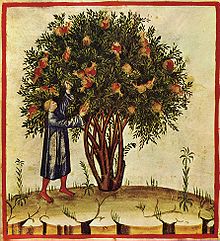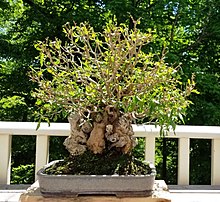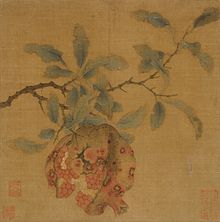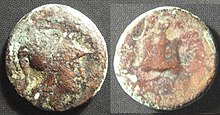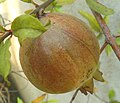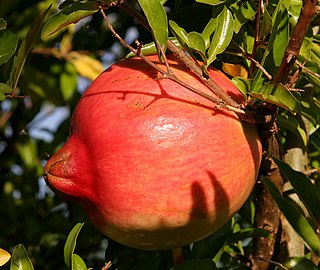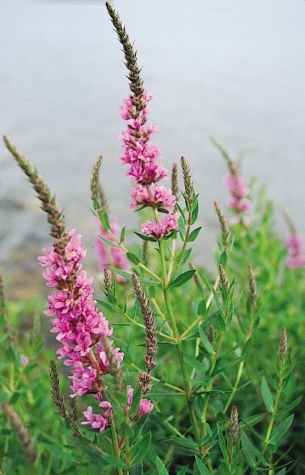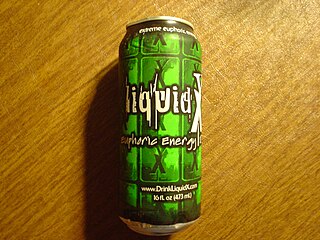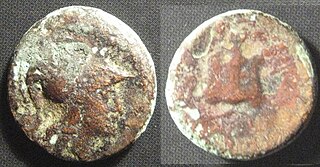Contents
- Etymology
- Description
- Fruit, sarcotesta and seeds
- Cultivation
- Varieties
- Cultivars
- Production and export
- History
- Use
- Culinary
- Ancient Iran and Persia
- Nutrition
- Research
- Phytochemicals
- Health claims
- Symbolism
- Ancient Egypt
- Ancient and modern Greece
- Ancient Israel and Judaism
- In European Christian motifs
- In Islam
- Armenia
- Azerbaijan
- China
- India
- Kurdish culture
- Mexico
- Gallery
- References
- External links
| Pomegranate | |
|---|---|
 | |
| Fruit of Punica granatum split open to reveal clusters of seeds with sarcotesta on the inside, and a glass of juice | |
| Scientific classification | |
| Kingdom: | Plantae |
| Clade: | Tracheophytes |
| Clade: | Angiosperms |
| Clade: | Eudicots |
| Clade: | Rosids |
| Order: | Myrtales |
| Family: | Lythraceae |
| Genus: | Punica |
| Species: | P. granatum |
| Binomial name | |
| Punica granatum | |
| Synonyms [2] | |
| |
The pomegranate (Punica granatum) is a fruit-bearing deciduous shrub in the family Lythraceae, subfamily Punicoideae, that grows between 5 and 10 m (16 and 33 ft) tall. The pomegranate is rich in symbolic and mythological associations in many cultures.

The pomegranate was thought to have originated from Afghanistan and Iran before being introduced and exported to other parts of Asia, Africa, and Europe. [4] [5] [6] It was introduced into Spanish America in the late 16th century and into California by Spanish settlers in 1769. [7] They are widely cultivated throughout West Asia and Caucasus region, South Asia, Central Asia, north and tropical Africa, the drier parts of Southeast Asia, and the Mediterranean Basin. [7] The fruit is typically in season in the Southern Hemisphere from March to May, and in the Northern Hemisphere from September to February. [8] [9]
As intact sarcotestas or as juice, pomegranates are used in baking, cooking, juice blends, meal garnishes, smoothies, and alcoholic beverages, such as cocktails and wine.

